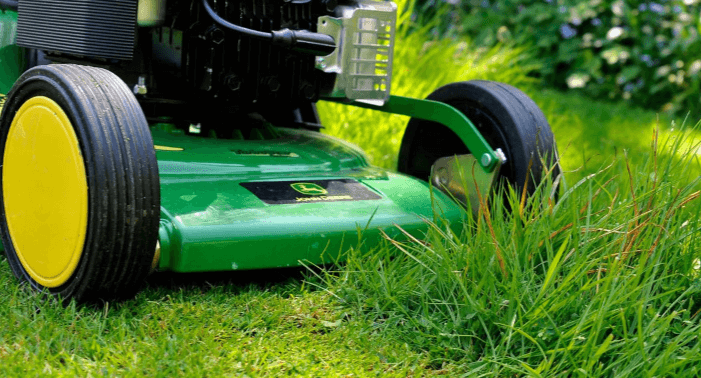The Best Lawn Care Tips for Spring

Introduction
Spring is the perfect time to rejuvenate your lawn after the cold winter months. As the snow melts and the days grow longer, your lawn begins to wake up from its dormancy, and proper care is essential to ensure it thrives throughout the year. A well-maintained lawn not only enhances your home’s curb appeal but also provides a beautiful, healthy environment for outdoor activities. Whether you’re a seasoned gardener or a first-time homeowner, this guide will walk you through the best lawn care tips for spring, helping you achieve that lush, green lawn you’ve always wanted.
Why Spring Lawn Care is Crucial
Spring lawn care is crucial because it sets the foundation for the rest of the year. After months of cold weather, your lawn needs attention to recover and prepare for the growing season. Neglecting your lawn in the spring can lead to problems such as weak growth, increased susceptibility to weeds, and pest infestations. By addressing key tasks early, you can ensure your lawn is healthy, resilient, and able to withstand the challenges of summer.
Assessing Your Lawn’s Condition
Before diving into specific lawn care tasks, it’s important to assess your lawn’s current condition. Walk around your yard and look for areas that may need special attention, such as bare patches, thinning grass, or signs of disease. Take note of any problem areas, as these will need to be addressed in your spring lawn care routine. Additionally, consider the type of grass you have, as different varieties have different needs.
Cleaning Up Your Lawn
The first step in spring lawn care is cleaning up your yard. Winter can leave behind debris such as fallen branches, leaves, and dead grass, which can smother your lawn and prevent new growth. Use a rake to remove any debris and thatch, a layer of dead grass and roots that can build up over time. Thatch can block water, nutrients, and air from reaching the soil, so it’s important to remove it to promote healthy grass growth.
Aerating Your Lawn
Aeration is a crucial step in spring lawn care, especially if your soil is compacted. Compacted soil can restrict the flow of air, water, and nutrients to the grass roots, leading to poor growth. Aerating involves creating small holes in the soil to alleviate compaction and allow the roots to breathe. You can use a manual aerator or rent a mechanical one, depending on the size of your lawn. Aerating your lawn in the spring helps it recover from the winter and sets the stage for robust growth.
Overseeding for a Lush Lawn
Overseeding is the process of spreading grass seed over your existing lawn to fill in thin or bare spots. Spring is an ideal time for overseeding because the mild temperatures and increased moisture create the perfect environment for seed germination. Choose a grass seed that matches your lawn’s existing grass type and climate. After overseeding, water your lawn regularly to help the new seeds establish roots and grow.
Choosing the Right Fertilizer
Fertilizing your lawn in the spring provides it with the nutrients it needs to thrive. A balanced fertilizer with nitrogen, phosphorus, and potassium is ideal for promoting healthy grass growth. However, the specific fertilizer you choose should depend on your lawn’s needs. Conduct a soil test to determine any nutrient deficiencies and select a fertilizer that addresses those gaps. Apply the fertilizer evenly across your lawn and water it in to help the nutrients reach the roots.
Watering Your Lawn Properly
Watering is a critical aspect of lawn care, and proper watering techniques are essential in the spring. As the temperatures begin to rise, your lawn will need consistent moisture to support new growth. Water your lawn deeply and infrequently, aiming for about an inch of water per week. Early morning is the best time to water, as it allows the grass to dry out during the day, reducing the risk of disease. Avoid overwatering, which can lead to shallow roots and increased susceptibility to pests and diseases.
Mowing Your Lawn to the Right Height
Mowing is one of the most important lawn care tasks, and doing it correctly in the spring sets the stage for healthy growth. Start mowing when the grass reaches about 3 inches in height, and avoid cutting more than one-third of the blade at a time. Keeping your grass at the proper height encourages deep root growth and helps prevent weeds from taking over. Make sure your mower blades are sharp to avoid tearing the grass, which can lead to brown tips and increased vulnerability to disease.
Controlling Weeds Early
Weeds can quickly take over your lawn if not controlled early in the season. Spring is the perfect time to tackle weeds before they have a chance to spread. Apply a pre-emergent weed control product to prevent weed seeds from germinating, and spot-treat any existing weeds with a post-emergent herbicide. For a more organic approach, hand-pulling weeds or using natural weed killers can be effective. Maintaining a healthy, thick lawn through proper mowing, watering, and fertilizing is the best defense against weeds.
Dealing with Lawn Pests
Spring is also the time when pests start to become active, and early detection is key to preventing damage to your lawn. Common lawn pests include grubs, chinch bugs, and sod webworms. Keep an eye out for signs of pest activity, such as brown patches or wilting grass. If you notice any signs of pests, apply an appropriate insecticide or consider natural alternatives like nematodes or insecticidal soaps. Maintaining a healthy lawn through proper care will also help reduce the likelihood of pest infestations.
Addressing Lawn Diseases
Lawn diseases can be a major problem in the spring, especially if your lawn is stressed from the winter. Common spring lawn diseases include snow mold, red thread, and dollar spot. These diseases can cause discoloration, thinning grass, and even death of the grass in severe cases. To prevent lawn diseases, ensure proper aeration, watering, and fertilization. If you notice signs of disease, treat your lawn with a fungicide appropriate for the specific disease and follow up with good lawn care practices to prevent recurrence.
Creating a Spring Lawn Care Schedule
To ensure your lawn gets the attention it needs, create a spring lawn care schedule. Plan out tasks such as mowing, fertilizing, watering, and weed control, and stick to the schedule throughout the season. Consistency is key to maintaining a healthy lawn, and a schedule helps you stay on top of essential tasks. Adjust the schedule as needed based on your lawn’s specific needs and the weather conditions in your area.
Incorporating Organic Lawn Care Practices
If you prefer a more natural approach to lawn care, consider incorporating organic practices into your spring routine. Organic lawn care focuses on building healthy soil and using natural products to promote grass growth. This can include using compost as a fertilizer, applying natural pest controls like neem oil or beneficial insects, and choosing organic grass seed for overseeding. While organic lawn care may take more time and effort, it can lead to a healthier, more resilient lawn in the long run.
Reseeding Bare Patches
Bare patches can be unsightly and provide an opportunity for weeds to take hold. Reseeding bare patches in the spring helps to fill in these areas and create a uniform, healthy lawn. Begin by removing any debris from the bare spots and loosening the soil with a rake. Spread grass seed over the area, then lightly rake it into the soil. Water the area regularly until the grass is established, and avoid walking on the reseeded spots until the grass has grown strong.
Caring for Newly Planted Grass
If you’ve planted new grass in the spring, it requires special care to ensure it becomes well-established. Water newly planted grass frequently, keeping the soil consistently moist but not waterlogged. Avoid mowing the new grass until it reaches about 3 inches in height, and then mow at a higher setting to protect the young blades. Be cautious with fertilizer, as too much can damage new grass. Gradually reduce watering as the grass becomes established, and follow regular lawn care practices to encourage strong growth.
Maintaining Lawn Equipment
Properly maintaining your lawn care equipment is essential for achieving the best results. Before the spring season begins, take the time to tune up your mower, sharpen the blades, and check the oil and air filter. Clean and inspect other tools such as trimmers, aerators, and spreaders to ensure they are in good working condition. Well-maintained equipment not only makes lawn care tasks easier but also helps protect your lawn from damage caused by dull blades or malfunctioning tools.
Mulching Around Trees and Shrubs
Mulching around trees and shrubs is an important step in spring lawn care. Mulch helps retain moisture, suppress weeds, and regulate soil temperature, all of which contribute to the health of your plants. Apply a 2-3 inch layer of mulch around the base of trees and shrubs, being careful not to pile it against the trunk or stems. Choose organic mulch, such as wood chips or shredded bark, for the best results. Mulching not only benefits your trees and shrubs but also adds a polished look to your landscape.
Creating Edging for a Clean Look
Edging your lawn creates a clean, defined border between your lawn and garden beds, walkways, or driveways. It not only enhances the appearance of your yard but also helps prevent grass from encroaching into unwanted areas. Use a spade or a powered edger to create a neat edge along your lawn’s perimeter. Regularly maintaining the edging throughout the spring will keep your lawn looking tidy and well-groomed.
Preparing for Summer Heat
As spring transitions into summer, it’s important to prepare your lawn for the upcoming heat. Gradually reduce the frequency of watering, but increase the amount of water you provide each time to encourage deep root growth. Raise your mower’s cutting height slightly to provide shade for the grass and reduce water loss. Apply a slow-release fertilizer to provide your lawn with nutrients throughout the summer months. These steps will help your lawn withstand the stress of hot, dry weather and remain healthy and green.
The Importance of Patience and Consistency
Lawn care is not an overnight process, and it requires patience and consistency to see results. Spring is just the beginning of the growing season, and the work you put in now will pay off in the months to come. Stick to your lawn care schedule, monitor your lawn’s progress, and adjust your practices as needed. With time and effort, you’ll enjoy a beautiful, lush lawn that enhances your outdoor space and provides a welcoming environment for family and friends.
FAQs
How often should I water my lawn in the spring?
Water your lawn deeply once or twice a week in the spring, aiming for about an inch of water each time. Early morning is the best time to water to reduce evaporation and the risk of disease.
What is the best time to fertilize my lawn in the spring?
The best time to fertilize your lawn is in early spring when the grass begins to green up and show signs of new growth. This helps provide the nutrients needed for healthy growth.
Should I aerate my lawn every spring?
Aerating your lawn every spring is beneficial, especially if your soil is compacted or if you have heavy foot traffic. It helps alleviate compaction and improves air, water, and nutrient flow to the roots.
How can I prevent weeds from taking over my lawn in the spring?
Prevent weeds by applying a pre-emergent herbicide in early spring to stop weed seeds from germinating. Maintain a healthy lawn through proper mowing, watering, and fertilizing to reduce the chances of weeds taking hold.
Is it necessary to overseed my lawn every spring?
Overseeding is recommended if your lawn has thin or bare spots that need filling in. It can help create a thicker, healthier lawn that is better able to resist weeds and pests.
What should I do if my lawn shows signs of disease in the spring?
If your lawn shows signs of disease, such as discolored patches or thinning grass, apply a fungicide appropriate for the disease. Ensure proper lawn care practices, including aeration, watering, and fertilizing, to prevent future outbreaks.
Conclusion
Spring is a critical time for lawn care, and by following these tips, you can set your lawn up for success throughout the year. From cleaning up debris to fertilizing, aerating, and mowing, each step plays an important role in achieving a lush, green lawn. Remember that consistency and patience are key, and the effort you put in during the spring will pay off with a beautiful, healthy lawn that you can enjoy all season long.




